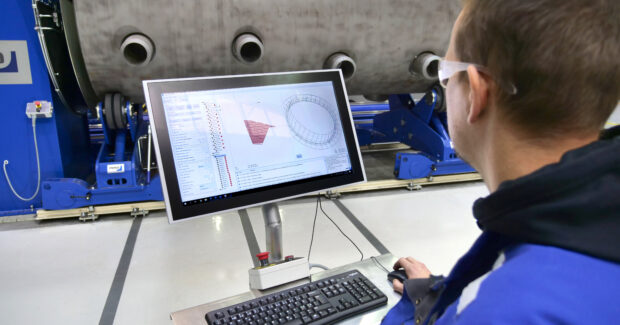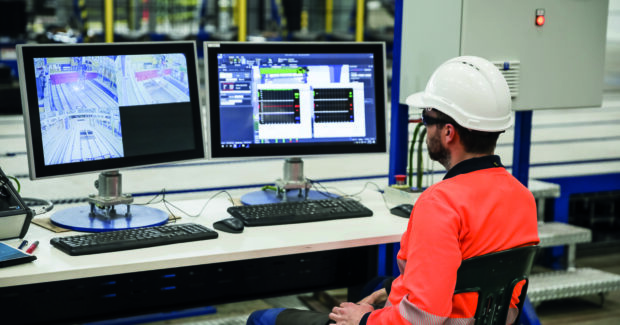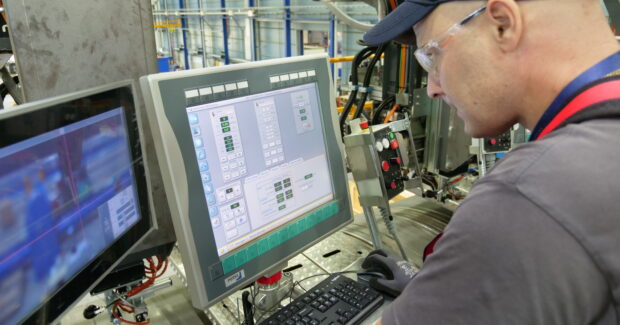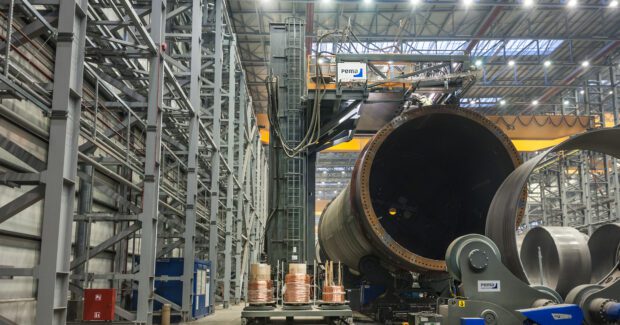Advances in Automated Robotic Welding Step Up Communication and Data Game
When it really comes down to it, data collection and automation are part of a larger concept: communication.
Posted: December 20, 2022
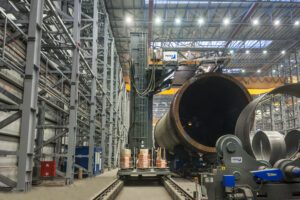
The devil is in the details when it comes to recent advances in automated robotic welding systems. Innovations are not always obvious to the casual observer. For example, faster, more flexible robotic arms or the ability to fill a complex groove with limited access are easy advancements to see. However, behind the scenes, in the offices and labs of automated welding leaders, software developers are figuring out how to leverage the power of their systems to capture all of weld quality data generated during a welding process in the hopes of providing more accurate processes, detailed reports, and solving the challenges encountered with complex geometries.
The ability of automated welding software to capture weld data in real time provides fabricators the ability to track processes every step of the way for more streamlined and efficient operations. It starts with a robotic arm outfitted with a laser scanning mechanism that runs along the entire weld piece, downloading measurements, groove locations and dimensions, thickness, etc., into the software. Based on these details, the operator can create weld paths offering traceability and direct data feedback. Parameters can be set regarding normal weld metal volume ranges and to set boundaries to ascertain what constitutes a deformity in the weld piece. And the level of accuracy is astounding.
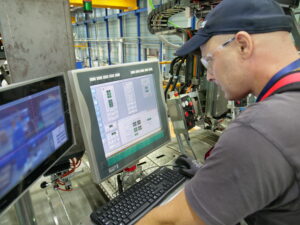
The software is also capable of generating a 3D model of the weld groove geometry based on the scan. Our Pema WeldControl 300 SCAN software, for example, suggests welding paths based on modeling data. Multi-pass welds are possible through the creation of robotic welding programs that adapt to the varying groove layers by continuously welding the grooves until a solid bond is formed. The software adjusts discrepancies between any pre-programmed groove geometry and laser-scanned geometry, providing feedback every step of the way. The operator uses his or her own expertise to read the data to adjust future weld paths and create new ones that are perhaps faster and more efficient. In industries where very large weld pieces are common, think oil and gas, offshore wind, shipbuilding, the ability to accurately weld tough-to-reach angles and grooves — and to capture useful data from each step — can save significant time in joining these giant components and reduce costly scrap. This is done via an open PDM interface that collects and maps all required data parameters from customer designs. It creates one data file that includes all of the information necessary to control the operation. We have a coordinating software system, WeldControl 500, that is used to control the automated multi-pass-welding and adaptive filling functions, generating weld paths based on data and parameters programmed by welding engineers.
Modular Platform Solutions
What if one wants to divide and map the assembly data with a machine-specific add-on requirement for each machine and/or product traceability? It’s possible to design a modular platform solution consisting of individual modules for every step of production ranging from design to cloud reporting. At Pemamek, we call ours the PEMA Product Data Handler (PDH). The 3D CAD program serves as the source for all phases of the digital operation, especially the simulation phase. It offers a functional digital twin for individual machines for just this purpose. The functional digital twin includes a virtual model of the machine(s) with all significant motion and PLC functions and is run via a PC-based HMI twin to simulate all possible situations to foresee potential problems before they occur on the actual production line. Further, by capturing data generated through these simulations, operations can be studied into the future to determine which welding strategies to avoid.
Laser scanning during the weld process can be used not only to check for weld metal volume but also where and when the metal is being deposited. If an error occurs on the weld, or an anomaly is detected based on the parameters set by the operator, the scan will create what’s called a data set, noting the point on the weld at which the anomaly occurred, what the issue was, and other technicalities important to the operator, including determining pre-pass and inter-pass temperatures to determine heat-affected zones accurately.
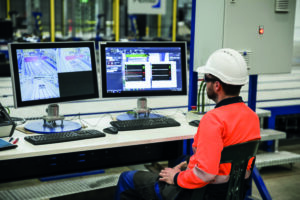
All of this information is nice to know but, beyond establishing trends and analyzing the data for future planning, what are the other benefits of investing in such a system? If you are an aerospace or military contractor, investing in an automated system is small pennies considering the time and costs you are already taking to even qualify for military jobs not to mention receive approvals for finished parts. Let’s start with pre-proving your methodologies. Once the kinks and errors have been eliminated from weld processes, fabricators can use the captured data to recreate already-proven weld techniques, providing the customer with indisputable proof that they work. When the qualification process can take more than two years, the ability to provide this information in advance is critical and can even give the fabricator an edge in winning contracts.
When it really comes down to it, data collection and automation are part of a larger concept: communication. By automating your welding system, you connect each and every component of that system – the robots, the column and booms, positioners, etc.,— via software specially designed to communicate important data, whether imported or scanned for the most efficient welds. In order to get the best possible results from your system partner with an automated welding expert capable of customization to your own needs.
One of our customers, ASM Industries (part of CSWind), the largest wind tower manufacturer in Portugal, has invested heavily in an automated welding system with positive results. The company’s Ivo Goncalves said the inclusion of a control interface has streamlined communications within the system and the operator and the ability to collect data has given them a full understanding of their machines and their operations.
If the digital chain is constant from design to manufacturing, the status of individual parts is always available in the customer’s overall model. The digital age is here to stay and the technology available now will only evolve into something even more advanced. It might be time to consider stepping up your automation game so you don’t get left behind.
Subscribe to learn the latest in manufacturing.





